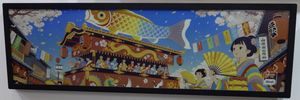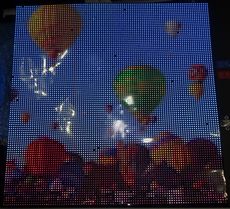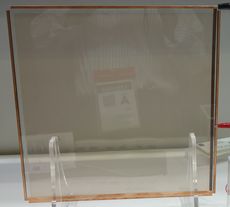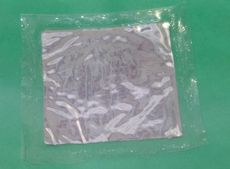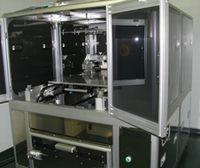 STELLA NEWS SITE is managed by Stella Corporation Inc. |
CEATEC 2025 (October 14 - 17) |
||||||||||||||||
CEATEC 2025, held at Makuhari Messe from October 14 to 17, showcased a variety of fascinating demonstrations centered on OLED and organic-TFT technologies. Here are some selected highlights, chosen from a personal and somewhat biased perspective. China's DKE Exhibits a Wide Range of E-Ink Electronic Paper Modules
Photo 1 shows a wide-aspect 28-inch color module that appeared almost as vivid as an LCD. In Japan, Marubun serves as the distributor, focusing mainly on signage applications. Full-Color LED Display Driven by High-Mobility Organic-TFTs
The showcased flexible panel measured 300 ~ 300 mm with 10,000 pixels. The bottom-gate bottom-contact type organic-TFTs were first formed on a glass substrate and then transferred to a PEN film for flexibility. As an LED display, it offered high brightness, and the resolution was sufficient for distant viewing, making it appear practically suitable for lightweight signage applications. However, several bright and dark defects were observed. According to the exhibitor,gthe defects originate from the organic-TFTs, and we are currently investigating the mechanism behind their occurrence.h Yamagata University Demonstrates Simplified Fabrication of OLEDs
As shown in Photo 3, this method produced highly uniform, bright organic EL devices. Electrical (I-V), optical (L-I), and lifetime characteristics were confirmed to be equivalent to those of spin-coated devices. The staff emphasized that gspray-coating costs less in materials and is much easier to handle.h
Since areas with the insulating layer do not emit light, characters or images can be displayed in monochrome. The system functions as a desktop manufacturing tool, allowing one-of-a-kind organic EL designs to be produced easily. Transparent Power-Generating Glass Based on Dye-Sensitized Solar Cells
Although detailed technical information remains undisclosed, the product is based on a dye-sensitized solar cell with a less porous TiO2 layer and nearly colorless sensitizing dyes, achieving over 70% visible light transmittance appearing nearly transparent to the eye. Because it can generate power from both sides, the glass could be used in windows to harvest energy from sunlight and indoor light. However, the photoelectric conversion efficiency remains below 1%, limiting potential applications to low-power tasks such as real-time sensing. Yokohama National University Proposes Ultra-Flexible Gas-Barrier Films Using Liquid Metal
It demonstrated oxygen barrier performance below the detection limit of standard measurement equipment and superior water vapor barrier properties (WVTR:10-2g/m2/day) compared to conventional stretchable materials. Even when stretched by 50%, the initial resistance remained nearly unchanged, and the protective film prevents corrosion. |
||||||||||||||||
| REMARK STELLA NEWS SITE is a free news site of FPD and PCB by Stella Corporation Inc.(This company does not release these FPD and PCB related products.) |
Novel system was released as manufacturing system of emulsion film mask. |

